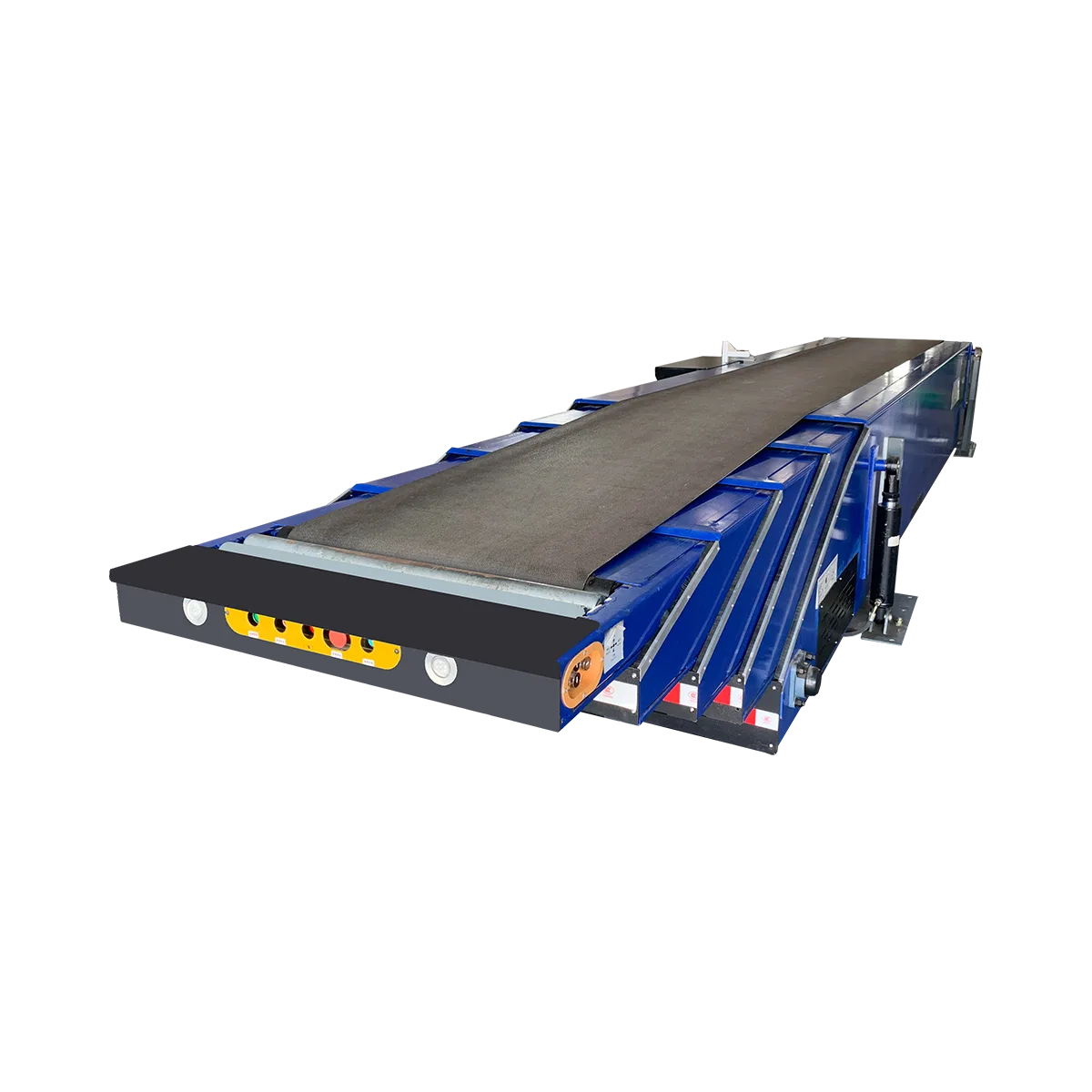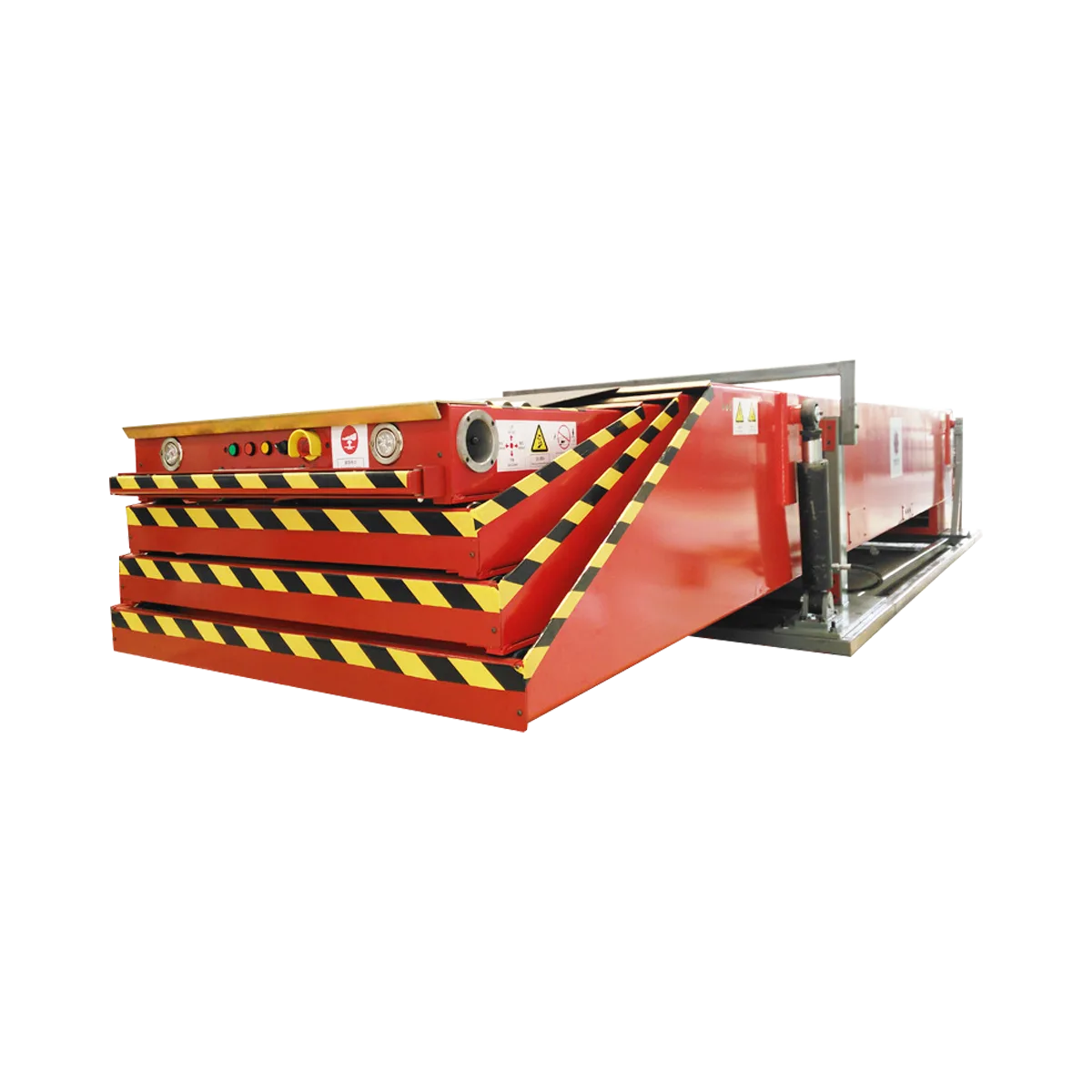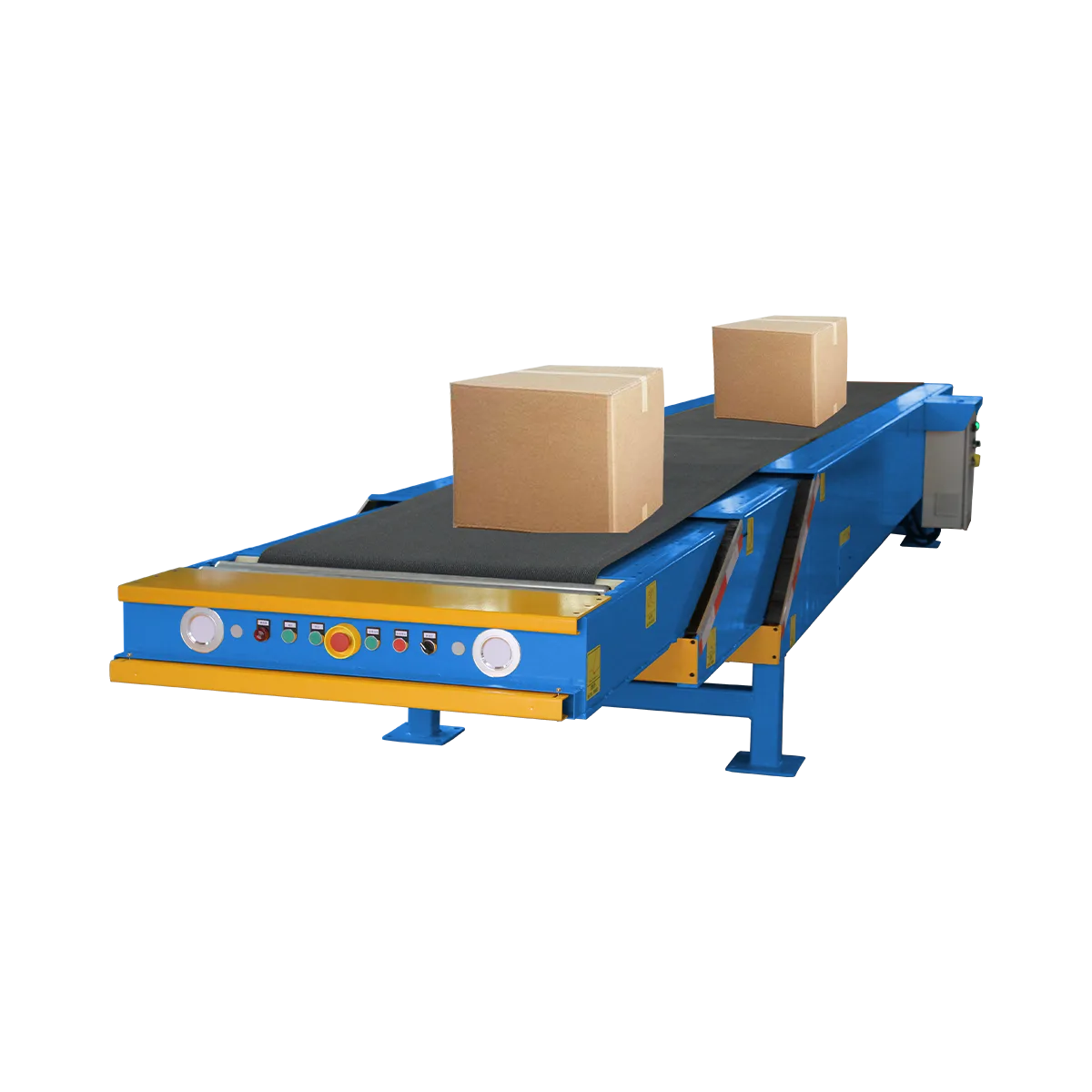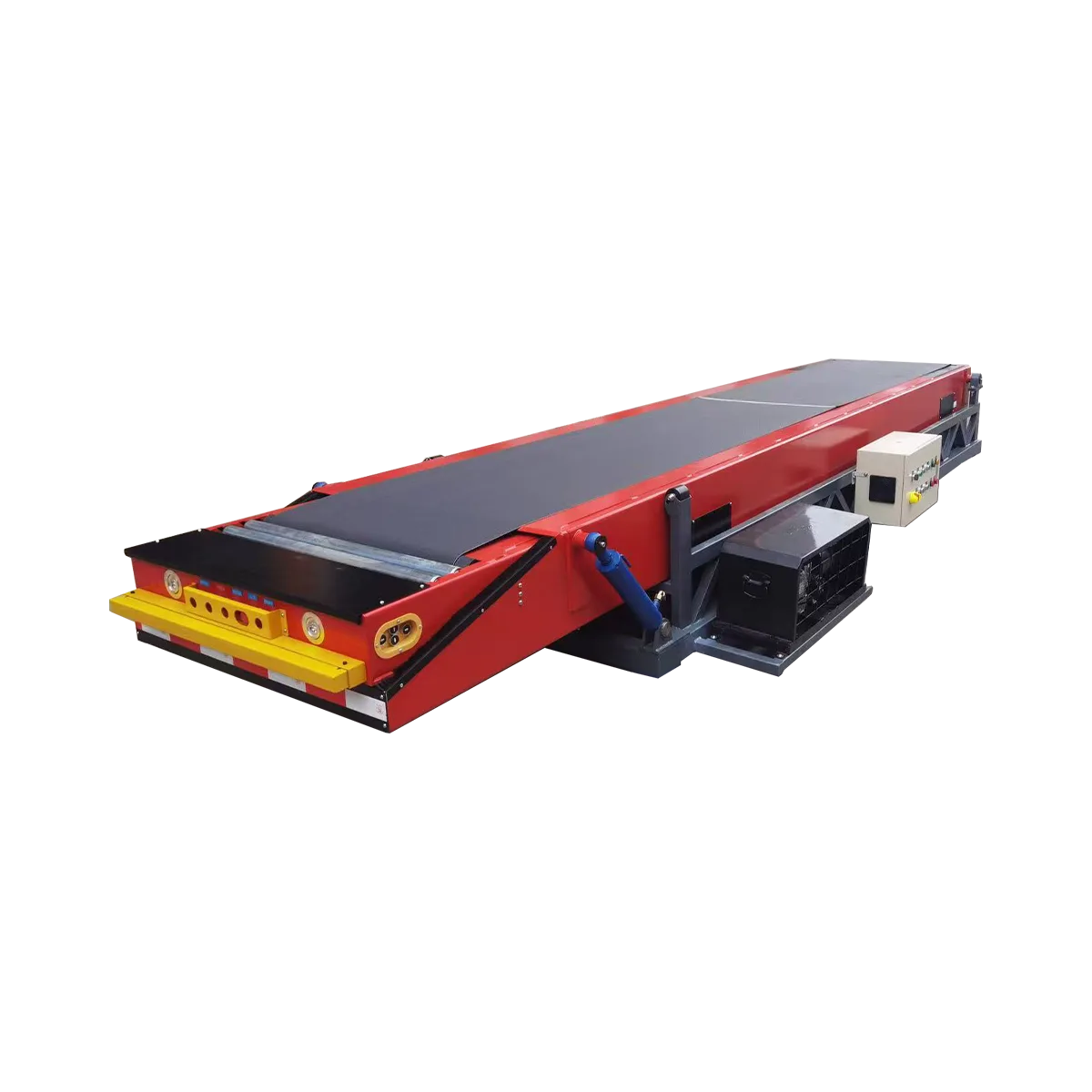Mobile Telescopic Belt Conveyor
A mobile telescopic belt conveyor is a versatile material handling solution designed to streamline loading and unloading operations in warehouses, distribution centers, and logistics facilities.
Related Products
-
TeleScopic Conveyor – 5 SectionsCollapsed LengthExtended LengthLoad Capacity
60 kg/m
Applicable GoodsFlat-bottomed Goods
Bagged Goods
-
TeleScopic Conveyor – 4 SectionsCollapsed LengthExtended LengthLoad Capacity
60 kg/m
Applicable GoodsFlat-bottomed Goods
Bagged Goods
-
TeleScopic Conveyor – 3 SectionsCollapsed LengthExtended LengthLoad Capacity
60 kg/m
Applicable GoodsFlat-bottomed Goods
Bagged Goods
-
TeleScopic Conveyor – 2 SectionsCollapsed LengthExtended LengthLoad Capacity
60 kg/m
Applicable GoodsFlat-bottomed Goods
Bagged Goods
A mobile telescopic belt conveyor is a versatile material handling solution designed to streamline loading and unloading operations in warehouses, distribution centers, and logistics facilities. Equipped with heavy-duty casters, these systems offer the flexibility to be repositioned as needed while providing exceptional reach capabilities with their extendable design. Mobile telescopic conveyors can extend deep into containers, trucks, and trailers, dramatically reducing manual handling requirements and accelerating the loading/unloading process. With adjustable height, bidirectional operation, and impressive throughput capacity, these systems have become essential equipment for operations looking to optimize their logistics workflow and reduce labor costs.
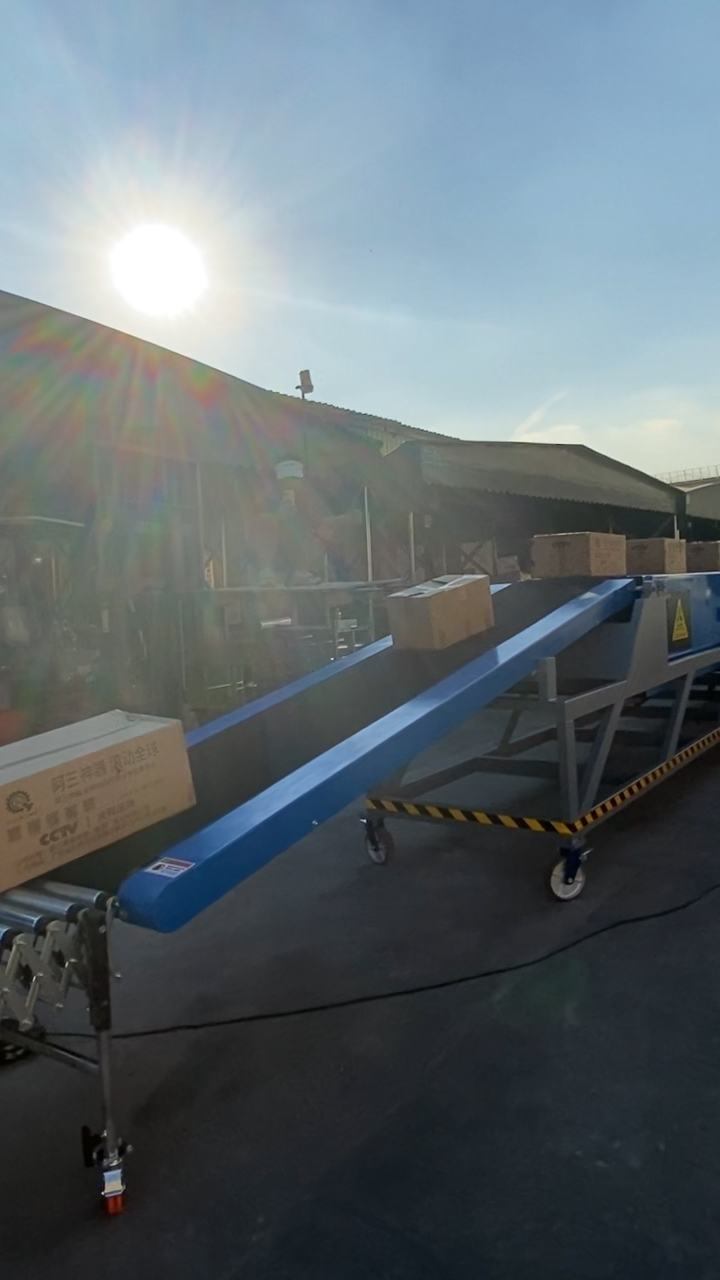
Key Features of Mobile Telescopic Belt Conveyors
The mobile telescopic belt conveyor represents sophisticated material handling engineering designed to maximize efficiency in loading and unloading operations. Available in configurations ranging from 2 to 5 nested sections, these systems can reach impressive lengths—up to 17 meters when fully extended—while maintaining a compact footprint when retracted.
What makes these systems truly valuable is their combination of reach capability and mobility. The heavy-duty casters allow for repositioning between different loading zones, providing exceptional operational flexibility. However, it’s crucial to note that despite their mobility features, the casters must be locked during operation, particularly for models with three or more sections, to prevent potential tipping due to leverage effects when loaded with cargo.
Core components and features include:
- Continuous 3mm PVK anti-impact composite belt with steel hook joints
- Bidirectional operation for both loading and unloading applications
- Variable speed control (10-40 m/min) to accommodate different product types
- Load capacity of up to 80 kg/m²
- Dual motor system: conveyor operation (2.2 kW) and extension mechanism (0.75 kW)
- Front-end collision protection for operator safety
- Available wheel options: manual casters for occasional movement or powered wheels for frequent repositioning
Technical Specifications and Model Options
Our mobile telescopic conveyors are available in various configurations to meet different operational requirements. The following table outlines our 600mm width models:
| Sections | Model | Fixed Length (m) | Extension Length (m) | Total Length (m) | Belt Width (mm) | Frame Height (mm) |
| Two | NLS-2-3/2 | 3 | 2 | 5 | 600 | 610 |
| Two | NLS-2-5/3 | 5 | 3 | 8 | 600 | 610 |
| Three | NLS-3-5/7 | 5 | 7 | 12 | 600 | 800 |
| Three | NLS-3-6/8 | 6 | 8 | 14 | 600 | 800 |
| Four | NLS-4-6/12 | 6 | 12 | 18 | 600 | 850 |
| Four | NLS-4-7/14 | 7 | 14 | 21 | 600 | 850 |
| Five | NLS-5-6/16 | 6 | 16 | 22 | 600 | 900 |
All models are also available in 800mm width for handling larger items. The equipment weight varies from approximately 1.3 tons for two-section models to 3.4 tons for five-section models.
When selecting casters for your mobile telescopic conveyor, it’s important to consider both the conveyor weight and the anticipated load. Our standard models include 4-inch heavy-duty casters with full braking capability, ensuring both mobility and stability when locked.
Key Benefits of Mobile Telescopic Belt Conveyors
Implementing a mobile telescopic conveyor in your operation delivers numerous advantages:
Operational Efficiency
- Significantly reduces loading/unloading times compared to manual methods
- Enables impressive throughput rates:Small parcels (up to 5kg): 3,500-5,000 pieces per hour
- Medium boxes (5-15kg): 2,500-3,500 pieces per hour
- Large cartons (15-30kg): 2,000-2,500 pieces per hour
- Heavy bagged goods (40-50kg): 1,500-2,000 pieces per hour
- Extends deep into containers (up to 17 meters with 5-section models)
- Bidirectional operation supports both loading and unloading processes
Labor Optimization
- Reduces workforce requirements by 2-4 workers per loading operation
- Minimizes physical strain and injury risk by eliminating deep container entry
- Improves employee satisfaction through easier work processes
- For operations handling over 1,000 packages daily, ROI is typically achieved within 6-12 months
Space Utilization
- Mobility allows a single system to serve multiple loading bays
- Compact storage when retracted during non-use periods
- Adjustable height accommodates various vehicle and dock configurations
- No permanent installation required, preserving valuable warehouse space
Product Protection
- Smooth, continuous belt ensures gentle handling
- Reduces product damage rates by approximately 80% compared to manual methods
- Consistent movement prevents package dropping or crushing
Optional Features for Enhanced Functionality
Customize your mobile telescopic belt conveyor with these valuable options to match your specific operational requirements:
Mobility Options
- Manual Wheels: Standard casters for occasional repositioning needs
- Powered Wheels: Motorized movement for frequent relocation between loading areas
Operator Enhancements
- Operator Platform: Mounted at the container end, allowing workers to stand at elevated positions for efficient top-level loading/unloading
- Front LED Lighting: Illuminates container interiors for improved visibility
- Remote Control Operation: Enables flexible positioning and control
Productivity Add-ons
- Counter System: Tracks package quantity for accurate inventory management
- Top Scanner Integration: Adds barcode scanning capability
- Hydraulic Lift System: Enables adjustment of the conveyor’s incline angle
- Cleated Belt: Features raised patterns to prevent items from sliding on inclines
- Rear End Ramp: Ideal solution for facilities without loading docks
Each option can be selected based on your specific requirements and budget considerations, creating a truly customized material handling solution.
System Integration Capabilities
Mobile telescopic belt conveyors can work seamlessly with certain other material handling equipment to create comprehensive logistics solutions:
- Can be paired with powered roller conveyors to transport goods from the warehouse to the telescopic conveyor’s tail end
- Connects easily with existing warehouse conveyor systems at the receiving end
- Can be positioned to serve as extensions of fixed conveyor systems
It’s important to note that while mobile telescopic conveyors work well with powered roller systems, they cannot be used in combination with hydraulic conveyors. Each system serves different purposes in the loading/unloading workflow.

Ideal Applications and Industries
Mobile telescopic belt conveyors excel in numerous environments:
Large Logistics Centers
These systems are perfect for facilities with fixed loading platforms handling significant package volumes. The extended reach eliminates the need for workers to enter deep into containers, dramatically improving efficiency and safety.
Distribution and Fulfillment Centers
These conveyors create an efficient bridge between storage areas and transportation vehicles, dramatically reducing loading/unloading times. Their mobility allows redeployment to different loading bays as needed throughout the day.
Container Loading/Unloading Operations
Particularly valuable for standard shipping containers (20ft and larger), these conveyors can reach the full depth, eliminating the need for workers to enter containers and manually move items. This results in faster turnaround times and reduced labor costs.
E-commerce Operations
With the explosive growth of online retail, these conveyors help distribution centers handle increasing package volumes efficiently. Their speed and flexibility support the dynamic needs of e-commerce fulfillment.
Manufacturing and Production Facilities
For manufacturers shipping finished goods, these systems streamline the loading process, reducing the time vehicles spend at docks and improving overall logistics efficiency.

Selecting the Right Mobile Telescopic Conveyor
Choosing the appropriate mobile telescopic conveyor requires consideration of several key factors:
Container and Vehicle Specifications
- Maximum container depth determines required extension length
- Vehicle height variations influence the needed height adjustment range
- Door width affects conveyor width selection (typically 600mm or 800mm)
Package Characteristics
- Weight and dimensions of typical packages
- Package material (fragile items may require adjustable speed control)
- Daily volume and throughput requirements
Facility Constraints
- Available storage space when the conveyor is not in use
- Floor load capacity (equipment ranges from 1.3 to 3.4 tons)
- Power availability (requires 3-phase 380V power standard, with other voltage options available upon request)
Section Configuration Guide
- 2 Sections: Maximum extension 2-6 meters, suitable for small trucks
- 3 Sections: Maximum extension 5-9.5 meters, ideal for half-depth containers
- 4 Sections: Maximum extension 9-17 meters, perfect for full-size containers
- 5 Sections: Maximum extension 16-17 meters, designed for special extra-long containers
For optimal efficiency and cost-effectiveness, select a model that can reach approximately 80-90% of your maximum container depth.
Safety Considerations for Mobile Systems
When operating mobile telescopic conveyors, safety must be a primary concern:
Mobility Safety
- Always lock all casters during operation
- For models with three or more sections, securing the unit is particularly crucial to prevent tipping due to leverage effects
- Ensure the floor surface is clean and level before positioning the conveyor
- When moving the unit, ensure it is fully retracted and there are no obstructions in the path
Operational Safety
- Maintain clear communication between loading and unloading personnel
- Follow recommended weight limits to prevent overloading
- Train operators on proper emergency stop procedures
- Keep hands and clothing away from moving belt and extension mechanisms
- Ensure proper lighting in the working area
Maintenance Safety
- Disconnect power before performing any maintenance
- Follow lockout/tagout procedures when servicing the equipment
- Use appropriate personal protective equipment during maintenance activities
- Only qualified personnel should perform electrical system maintenance
Proper training and adherence to safety protocols significantly reduce accident risks and ensure smooth operation.
Maintenance and Longevity
With proper care, mobile telescopic belt conveyors provide 8-10 years of reliable service. Key maintenance considerations include:
Regular Maintenance Schedule
- Daily visual inspection before operation
- Weekly check of caster condition and braking mechanisms
- Monthly checks of belt tension and condition
- Quarterly lubrication of bearings and inspection of electrical systems
- Annual comprehensive maintenance and safety evaluation
Key Replacement Components
- Conveyor belt: Typically replaced every 2-3 years depending on usage
- Bearings: Inspection/replacement every 3-5 years
- Motor carbon brushes: Check approximately every 5 years
- Caster wheels: Inspect regularly for wear and proper braking function
Support and Warranty
- One-year standard warranty
- Complete spare parts shipping service for international customers
- Installation and maintenance video guides provided
Implementing a regular maintenance program significantly extends equipment lifespan and prevents costly downtime.
FAQs About Mobile Telescopic Belt Conveyors
What makes a telescopic conveyor “mobile” and why is it important?
Mobility comes from heavy-duty casters that allow repositioning between loading areas. This feature lets one conveyor serve multiple locations, maximizing equipment utilization and adapting to changing workflow needs.
Do I need to secure the mobile telescopic conveyor during operation?
Yes. Always lock all casters during operation. For three or more section models, securing is especially critical to prevent potential tipping due to leverage effects when loaded with cargo.
Can mobile telescopic conveyors work with hydraulic conveyors?
No. Telescopic conveyors cannot be used with hydraulic conveyors. However, they can effectively pair with powered roller conveyors to move goods from warehouse areas to the telescopic conveyor for loading operations.
What is the maintenance cost and schedule?
Maintenance costs typically run 5-8% of initial investment annually. Schedule includes daily visual inspection, monthly light maintenance, quarterly comprehensive checks, and belt replacement every 2-3 years.
How does a telescopic conveyor compare to manual loading in cost efficiency?
For operations handling over 1,000 packages daily, telescopic conveyors typically reduce labor needs by 2-4 workers, increase loading speed significantly, reduce product damage by approximately 80%, and achieve ROI within 6-12 months.
Conclusion
Mobile telescopic belt conveyors represent a significant advancement in loading and unloading technology for warehouses, distribution centers, and logistics operations. By combining extended reach capabilities with the flexibility of mobility, these systems provide an optimal solution for operations that require both high efficiency and adaptability.
The addition of casters transforms a standard telescopic conveyor into a versatile tool that can be deployed wherever needed, maximizing equipment utilization across multiple loading bays. However, the importance of properly securing these mobile units during operation cannot be overstated, particularly for longer models where leverage effects could create safety hazards.
For operations handling substantial package volumes, the return on investment is typically realized within 6-12 months through labor savings, increased throughput, and reduced product damage. With various configurations available to match specific operational needs, businesses can select the ideal system based on their container depths, package characteristics, and facility constraints.
As logistics operations continue to face pressure for faster processing and lower costs, mobile telescopic conveyors provide a proven solution that addresses both operational efficiency and workflow flexibility. By investing in this technology, companies can gain a competitive edge through streamlined material handling processes while maintaining the adaptability needed in today’s dynamic logistics environment.
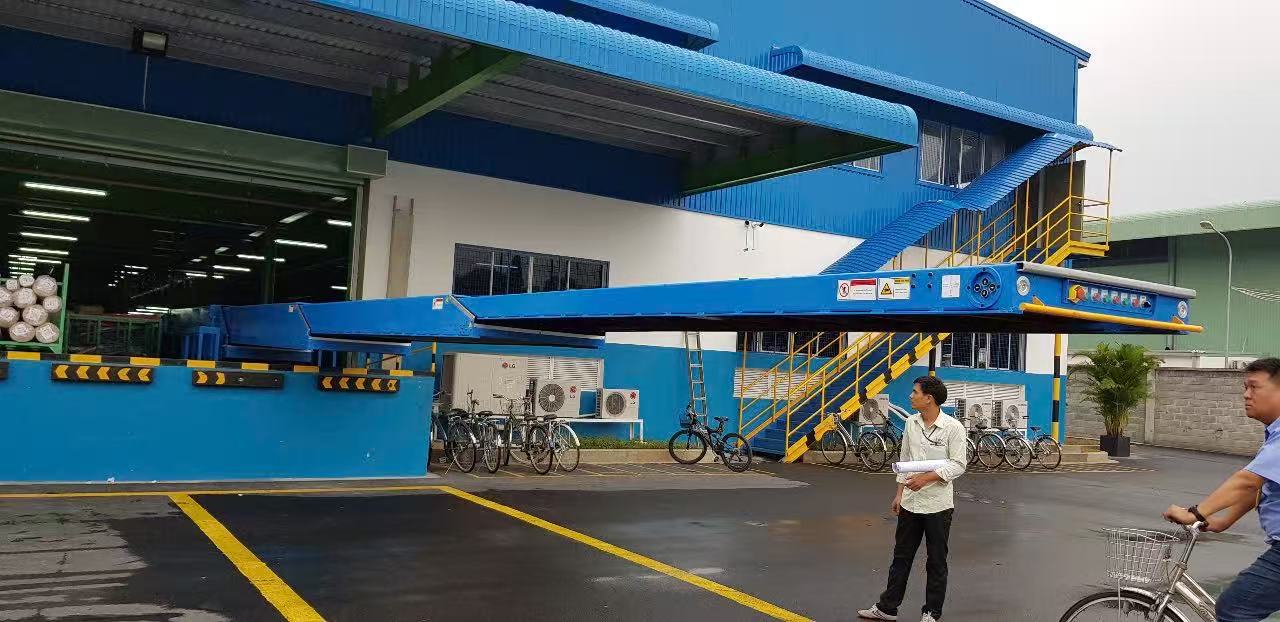
Table of Contents
Recent Posts
Discover how to select the perfect conveyor width for your warehouse operations. Our expert guide helps you match box sizes to conveyor dimensions for optimal efficiency and fewer jams.
Discover effective outdoor conveyor solutions for connecting warehouse to truck across open yards. Our guide to all-weather yard logistics will transform your loading efficiency.

